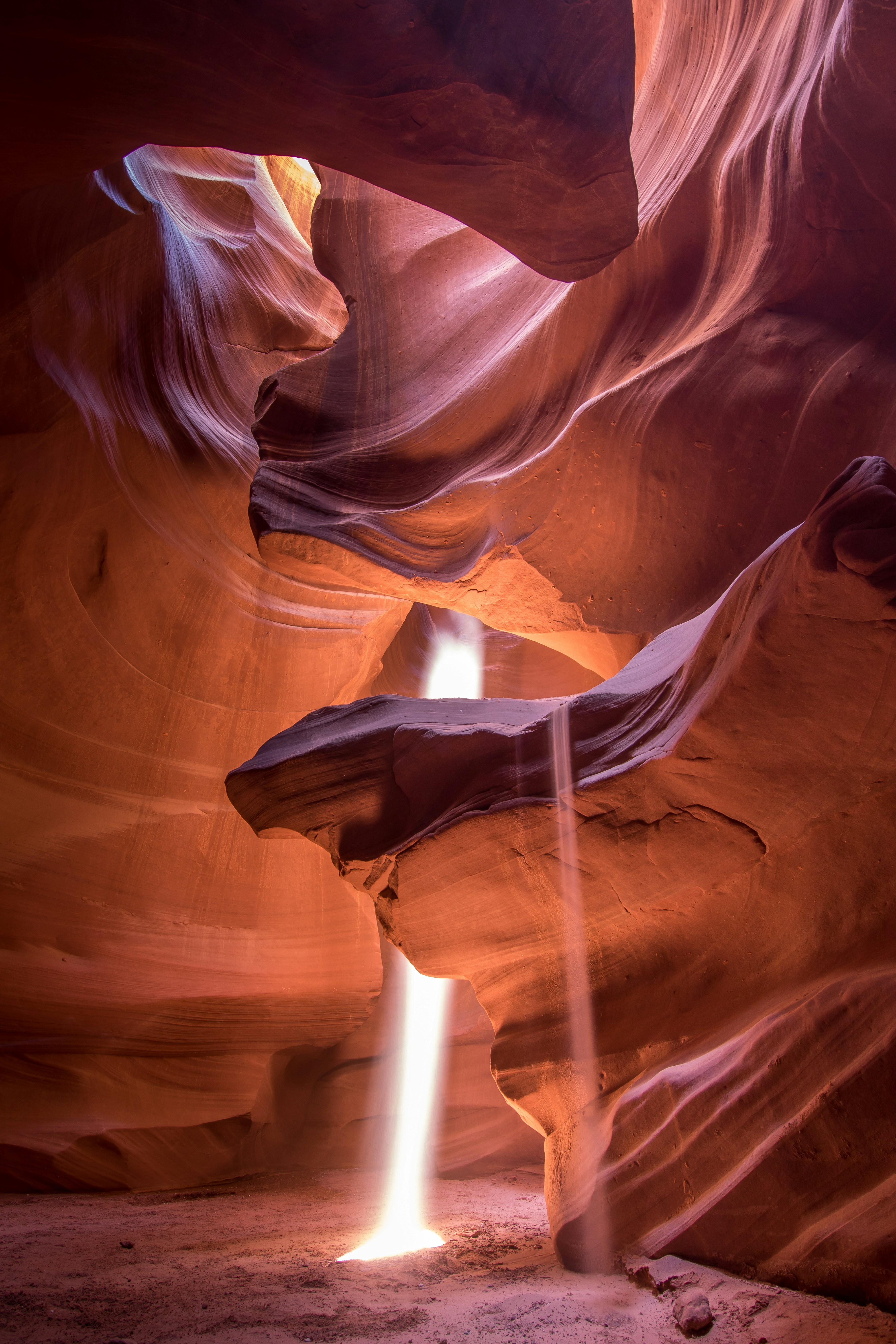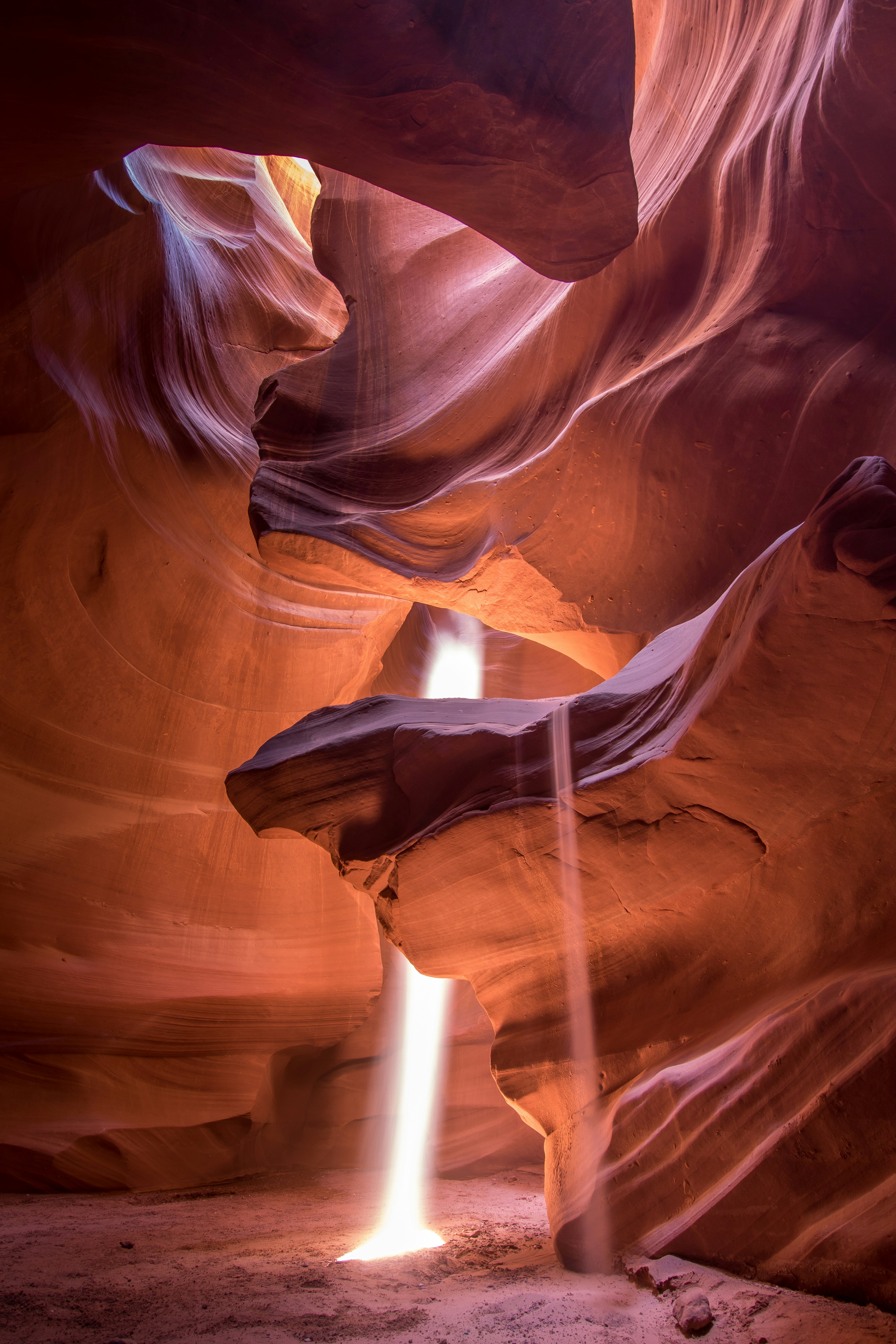As the sun rises over the desert horizon, its warm golden rays illuminate the ancient rock formations, casting a mesmerizing glow on the canyon walls. The deep reds and oranges that dominate the landscape are a result of the iron oxide present in the rocks. Over millions of years, the iron in the rocks has oxidized, giving them their distinctive hues. These rich, earthy tones create a sense of warmth and timelessness, drawing visitors into the heart of the canyon.
But it’s not just the reds and oranges that make the canyons so captivating. As you explore further into the depths of the canyon, you’ll discover a whole spectrum of colors that seem almost otherworldly. Vibrant yellows and ochres can be seen in the layers of sandstone, while shades of purple and pink can be found in the sedimentary rocks.
One of the most breathtaking displays of color can be witnessed during the golden hour, when the setting sun bathes the canyon walls in a soft, ethereal light. The rocks come alive with a kaleidoscope of hues, as if nature itself is putting on a show. The interplay of light and shadow creates a sense of depth and dimension, making the canyon walls appear almost three-dimensional.
As you hike along the canyon trails, you’ll also notice the subtle variations in color that occur as you move from one area to another. The colors may shift from deep reds to lighter oranges, or from vibrant yellows to muted browns. These variations are a result of different mineral compositions in the rocks, as well as the effects of weathering and erosion over time.
But it’s not just the colors of the canyon walls that captivate visitors; it’s also the contrast between the vibrant hues and the stark desert landscape. The arid desert floor, with its muted browns and grays, provides a striking backdrop for the vivid colors of the canyons. This contrast creates a visual feast for the eyes, highlighting the beauty and uniqueness of these desert landscapes.
Whether you’re an avid photographer, a nature enthusiast, or simply someone who appreciates the wonders of the natural world, exploring America’s desert canyons is an experience like no other. The colors of the canyon are a testament to the power and beauty of nature, and a reminder of the incredible diversity that exists within our planet.
While the Grand Canyon and Bryce Canyon are undoubtedly the most well-known red canyons, they are not the only ones that offer a mesmerizing display of red rock formations. One such hidden gem is the Vermilion Cliffs National Monument in northern Arizona. This remote and rugged area is home to a stunning array of red sandstone cliffs, canyons, and plateaus.
As you venture into the Vermilion Cliffs, you’ll be greeted by towering cliffs that seem to reach up towards the sky. The vibrant red hues of the sandstone are intensified by the contrast of the deep blue sky above. It’s a sight that will leave you in awe of the power and beauty of nature.
But the red canyons of the American Southwest are not just visually stunning; they also hold a wealth of geological history. The layers of red rock that form these canyons tell a story that spans millions of years. Each layer represents a different era, with its own unique characteristics and fossils.
Exploring these canyons is like taking a journey through time, as you walk along the canyon walls and observe the different layers of rock. It’s a reminder of just how ancient and ever-changing our planet is.
Aside from their geological significance, the red canyons also offer a haven for a diverse range of plant and animal species. Despite the harsh desert conditions, life thrives in these canyons. From desert bighorn sheep to colorful wildflowers, the canyons are teeming with life.
For outdoor enthusiasts, the red canyons provide ample opportunities for adventure. Hiking trails wind through the canyons, offering breathtaking views at every turn. Rock climbing enthusiasts can test their skills on the sheer cliffs, while photographers will find endless inspiration in the dramatic landscapes.
Whether you’re a nature lover, an adventure seeker, or simply someone who appreciates the beauty of the natural world, the red canyons of America’s deserts are a must-see. Their vibrant red hues, unique rock formations, and rich geological history make them a truly unforgettable destination.
One can’t help but be mesmerized by the beauty of these golden canyons. Antelope Canyon, with its narrow passageways and intricate rock formations, offers a truly unique experience. As you navigate through the narrow slots, you can’t help but feel a sense of awe as the golden light beams dance on the walls, creating a surreal atmosphere. The interplay between light and shadow is like a work of art, captivating visitors and photographers alike.
Similarly, Zion Canyon in Utah is a treasure trove of golden beauty. As you enter the canyon, you are greeted by towering sandstone cliffs that seem to glow in the warm sunlight. During the golden hour, when the sun is low on the horizon, the golden hue intensifies, casting a magical spell on the entire canyon. It’s a photographer’s dream, with every turn offering a new perspective and a new opportunity to capture the golden essence of this natural wonder.
But the beauty of these canyons goes beyond their golden hue. Antelope Canyon, for instance, is also known for its smooth, flowing lines and intricate patterns carved by water over millions of years. The rock formations seem to come alive, as if telling a story of the earth’s history. Visitors can’t help but feel a sense of wonder and reverence as they explore this geological masterpiece.
Similarly, Zion Canyon boasts not only golden cliffs but also a rich diversity of flora and fauna. The lush green vegetation that thrives in the canyon creates a striking contrast against the golden backdrop. Hiking through the canyon, you may come across vibrant wildflowers, towering cottonwood trees, and even the occasional glimpse of wildlife. It’s a paradise for nature lovers, offering a unique blend of golden beauty and natural wonders.
Whether you find yourself in Antelope Canyon or Zion Canyon, you can’t help but be captivated by the golden canyons. These natural wonders are a testament to the power and beauty of nature, reminding us of the incredible diversity and splendor that our planet has to offer. So, if you ever have the chance to visit these golden canyons, be prepared to be amazed and inspired by their golden glow.
The Vibrant Canyons
While red and gold are the colors most commonly associated with desert canyons, there are also canyons that offer a vibrant display of colors. One such canyon is the Painted Desert in Arizona. True to its name, the Painted Desert is a kaleidoscope of colors, with its vibrant shades of red, orange, pink, and purple. The layers of sedimentary rock in the canyon create a stunning visual effect that is unlike anything else.
Another vibrant canyon worth exploring is the Valley of Fire State Park in Nevada. This park is known for its striking red sandstone formations, which take on a fiery appearance when the sunlight hits them. The combination of the red rocks and the blue sky creates a vibrant contrast that is truly mesmerizing.
However, these are not the only canyons that showcase a vibrant palette. In fact, all across the world, there are canyons that boast a stunning array of colors, each with its unique geological history. One such example is the Antelope Canyon in Arizona, renowned for its swirling patterns and vibrant hues of orange, pink, and purple. Formed by millions of years of erosion, the smooth sandstone walls of the canyon seem to come alive with a kaleidoscope of colors when illuminated by the sun’s rays.
Another awe-inspiring canyon that dazzles with its vibrant colors is the Zhangye Danxia Landform Geological Park in China. This geological wonder is a masterpiece of nature, with its rainbow-like layers of sedimentary rock in hues of red, orange, yellow, and green. As the sunlight changes throughout the day, the colors of the rock formations shift and transform, creating a mesmerizing spectacle that attracts visitors from all over the world.
Heading south to South America, we find the Rainbow Mountain in Peru. This majestic mountain range, also known as Vinicunca, is a true natural wonder. Its vibrant colors are the result of different mineral deposits that have been exposed over time. The mountain is adorned with stripes of red, yellow, green, and blue, creating a breathtaking sight that is nothing short of a painter’s dream.
Whether it’s the Painted Desert, the Valley of Fire, Antelope Canyon, Zhangye Danxia, or Rainbow Mountain, these vibrant canyons are a testament to the beauty and diversity of our planet. They serve as a reminder of the incredible forces of nature that have shaped our world, and the awe-inspiring sights that await those who venture off the beaten path.
Enter your email to get the Latest Updated Exploring News and Topics
Discover more from atozexplore.com
Subscribe to get the latest posts sent to your email.







